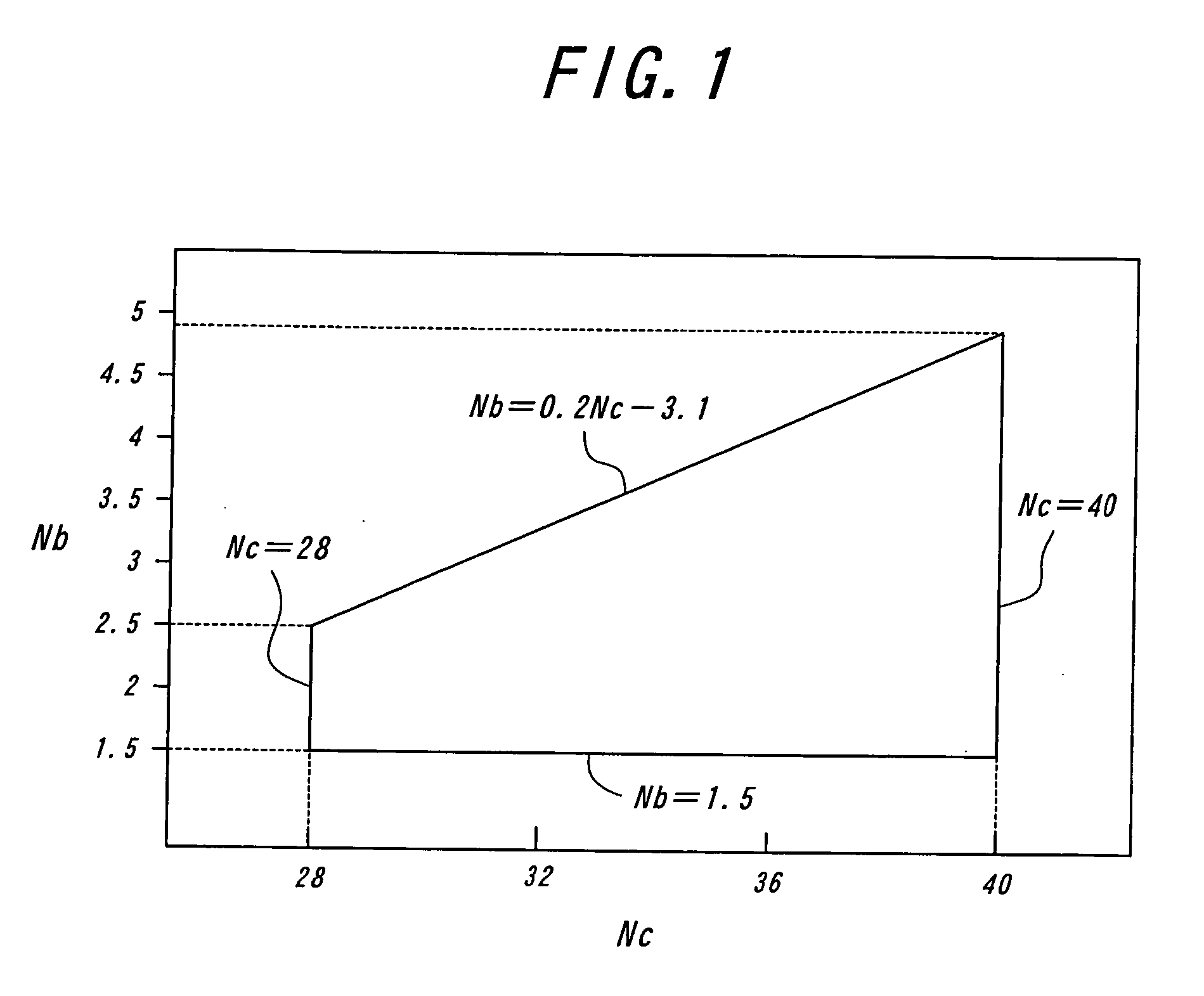Lubricant base oil and method of producing the same
a technology base oil, which is applied in the direction of lubricant composition, hydrocarbon oil treatment products, naphtha reforming, etc., can solve the problems of reducing the yield of base oil, increasing the amount of light fractions, and not obtaining satisfactory properties of base oil, so as to achieve high yield, yield and the properties of lubricant base oil can be further improved, and the viscosity index is high
- Summary
- Abstract
- Description
- Claims
- Application Information
AI Technical Summary
Benefits of technology
Problems solved by technology
Method used
Image
Examples
example 1
{Fischer-Tropsch Synthetic Wax Used as a Starting Material}
[0072] A starting wax A is a SX-60M made by SMDS (Shell Middle Distillate Synthesis) which is obtained by fractional distillation of a paraffin produced by a Fischer-Tropsch synthesis. A starting wax B used in a comparative example is a SX-50 made by SMDS (Shell Middle Distillate Synthesis). Main properties of these starting waxes are shown in Table 1.
TABLE 1UnitStarting wax AStarting wax BDensity (at 15° C.)g / cm30.8170.809Sulfur contentwtppmNitrogen contentwtppmNormal paraffin in totalwt %89.189.9C11-20wt %0.82.8C21-30wt %31.678.2C31-40wt %49.58.9C41-50wt %7.10C51-60wt %0.10Average carbon number Nc29.023.8DistillationIBP° C.343.0316.010%° C.401.0379.050%° C.474.0416.590%° C.524.5456.5FBP° C.580.5488.5
[0073] (Catalyst for Isomerizing Fischer-Tropsch Synthetic Wax)
[0074] 2000 g of alumina powder (Pural SB1 made by Condea) and 250 g of silica gel (Cariact G6 made by Fuji Silysia Chemical Co., Ltd.) are charged into a knead...
example 2
[0095] The same starting wax A and catalyst B as in Example 1 are used for the isomerization. The same procedure as in Example 1 is repeated except that LHSV is 0.44 hr−1 to obtain oil P2. The decreasing ratio of a fraction having a boiling point of not lower than 360° C. derived from analytical results of oil P2 by the distillation gas chromatography is 28.0% by weight. The oil P2 is dewaxed in the same manner as Example 1 to obtain dewaxed oil DWO2. The fraction having a boiling point of not lower than 360° C. is fractional-distilled from the dewaxed oil DWO2 through a TBP distillation apparatus to obtain lubricant base oil L2. The analytical results of the lubricant base oil L2 about the same items as in Example 1 are shown in Table 2. The total content of normal paraffin and isoparaffin is 100% by weight.
example 3
(First Hydroisomerization of Fischer-Tropsch Synthetic Wax)
[0096] 100 cc of the catalyst B sized into 10-14 mesh is weighed and filled in a fixed-bed fluid reactor having a length of 1260 mm and an inner diameter of 25 mm. Then, the temperature of the reactor is set at 300° C., and desulfurized diesel oil containing 1% by volume of carbon disulfide is flowed through the reactor for 24 hours to conduct a preliminary desulfurization of the catalyst, and thereafter the starting wax A is flowed through the reactor under hydrogen flow to conduct the hydrocracking of the Fischer-Tropsch synthetic wax.
[0097] Moreover, the hydrogen gas used in the reaction has a purity of 99.99% by volume and a moisture of not more than 0.5 ppm by weight and contains other impurities that a concentration of sulfur compound is not more than 1 ppm by weight as converted into sulfur, a concentration of nitrogen compound is not more than 0.1 ppm by weight as converted into nitrogen, a concentration of oxygen...
PUM
| Property | Measurement | Unit |
|---|---|---|
| Fraction | aaaaa | aaaaa |
| Percent by mass | aaaaa | aaaaa |
| Percent by mass | aaaaa | aaaaa |
Abstract
Description
Claims
Application Information
 Login to View More
Login to View More - R&D
- Intellectual Property
- Life Sciences
- Materials
- Tech Scout
- Unparalleled Data Quality
- Higher Quality Content
- 60% Fewer Hallucinations
Browse by: Latest US Patents, China's latest patents, Technical Efficacy Thesaurus, Application Domain, Technology Topic, Popular Technical Reports.
© 2025 PatSnap. All rights reserved.Legal|Privacy policy|Modern Slavery Act Transparency Statement|Sitemap|About US| Contact US: help@patsnap.com


